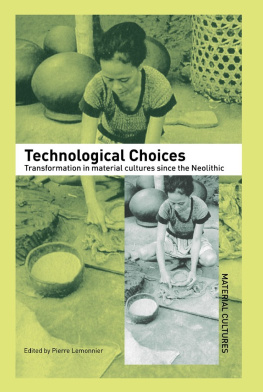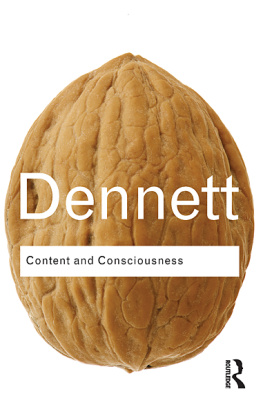TECHNOLOGICAL CHOICES
Technological Choices deals with the adoption or rejection by a society of certain technological innovations and the cultural processes which result in this selection. It demonstrates that in any society, such choices result from cultural values and social relations, rather than inherent benefits in the technology itself. This revolutionary viewpoint has crucial implications for current western societies.
The book is based on case studies covering a wide chronological and geographic span from Neolithic Europe to modern industry via Papua New Guinea tribes, rural societies in India and North Africa and several European peasant communities. Techniques studied range from the manufacture of stone implements to high-tech transportation devices. Technological Choices breaks new ground by the breadth of its scope and its multidisciplinary approach, and by its very emphasis on choice. It is also unusual in its focus on the functional aspects of material culture.
Technological Choices will be of great interest to students of the history of technology, archaeology and anthropology. It will also be essential reading for economists and social historians.
Pierre Lemonnier heads a research team at the Centre National de la Recherche Scientifique, and teaches at the University of Paris I. He has carried out extensive research in social anthropology in Papua New Guinea.
MATERIAL CULTURES
Interdisciplinary studies in the material construction of social worlds
Series Editors: Daniel Miller, Dept of Anthropology, University
College London; Michael Rowlands, Dept of Anthropology, University
College London; Christopher Tilly, Dept of Archaeology, St Davids University College, Wales.
MATERIAL CULTURE AND TEXT
The Art of Ambiguity
Christopher Tilly
ARCHAEOLOGICAL THEORY IN EUROPE
The Last Three Decades
Edited by Ian Hodder
EXPERIENCING THE PAST
On the Character of Archaeology
Michael Shanks
THEORY AND PRACTICE IN ARCHAEOLOGY
Ian Hodder
ARCHITECTURE AND ORDER
Approaches to Social Space
Michael Parker Pearson and Colin Richards

First published 1993
by Routledge
2 Park Square, Milton Park, Abingdon, Oxon, OX14 4RN
Simultaneously published in the USA and Canada
by Routledge
270 Madison Ave, New York NY 10016
Reprinted 2000, 2001, 2002
Transferred to Digital Printing 2006
Routledge is an imprint of the Taylor & Francis Group
1993 Pierre Lemonnier
Set in 10/12pt Garamond, Linotron 300
by Florencetype Ltd, Kewstoke, Avon
All rights reserved. No part of this book may be reprinted or reproduced or utilized in any form or by any electronic, mechanical, or other means, now known or hereafter invented, including photocopying and recording, or in any information storage or retrieval system, without permission in writing from the publishers.
British Library Cataloguing in Publication Data
Lemonnier, Pierre
Technological Choices: Transformation in Material Cultures Since the Neolithic
I. Title
306.4
Library of Congress Cataloging in Publication Data
Lemonnier, Pierre
Technological choices : transformation in material cultures since the neolithic / Pierre Lemonnier.
p. cm. (Material cultures)
Includes bibliographical references and index.
1. TechnologySocial aspects. I. Title. II. Series.
T14.5.L44 1992
303.48'3dc20
9223310 CIP
ISBN 0-415-07331-6
eISBN 978-1-134-52306-1
Publishers Note
The publisher has gone to great lengths to ensure the quality of this reprint but points out that some imperfections in the original may be apparent
Printed and bound by CPI Antony Rowe, Eastbourne
Pierre Lemonnier is a Charg de Recherche at the Centre National de la Recherche Scientifique (C.N.R.S).
Pierre Ptrequin is a Directeur de Recherche at the Centre National de la Recherche Scientifique.
Genevive Bdoucha is a Charge de Recherche at the Centre National de la Recherche Scientifique.
Tim Ingold is a Senior Lecturer in the Department of Anthropology at the University of Manchester.
Marie-Claude Mahias is a Charge de Recherche at the Centre National de la Recherche Scientifique.
Robert Cresswell is a Directeur de Recherche at the Centre National de la Recherche Scientifique. He teaches at the University Paris V.
Georges Guille-Escuret is a Charg de Recherche at the Centre National de la Recherche Scientifique.
Nicolas Govoroff is a Doctor in ethnology and a member of the Laboratoire dEthnologie et de Sociologie Comparative (University Paris X, Nanterre).
Sander van der Leeuw is a Lecturer in the Department of Archaeology, Cambridge University.
Madeleine Akrich is a Charge de Recherche at the Centre de Sociologie de lInnovation, Ecole Nationale Suprieure des Mines de Paris.
Bryan Pfaffenberger is an Assistant Professor at the School of Engineering and Applied Science, University of Virginia.
Bruno Latour is a Professor at the Ecole Nationale Suprieure des Mines de Paris and also at the University of California (San Diego).
Jean-Franois Quilici-Pacaud worked as an Engineer at Renault Cars for 25 years (now retired). He trained at the Ecole Centrale.
The editor and publishers would like to thank the Fondation de la Maison des sciences de lhomme for their financial assistance with translations.
Thanks also to the research team Techniques et culture of the Centre National de la Recherche Scientifique for its constant backing in this undertaking.
9.3 Zamboanguita
For larger pots, the potter uses a different technique for the bottom only
9.5 Dumaguete
Shaping the lower half of a vessel on a rotating support consisting of an upside-down pot on an axle. Here, after placing a pizza on the support, the potter adds a roll which will be shaped into a ring on which the vessel will stand.
9.6 Jutland
A ball of paste on a hollow dish is turned around and shaped by pulling the clay up. The rim is made last.
9.7 North Germany
First of the reconstructions of ancient shaping methods proposed by Ldtke.
9.8 North Germany
Another shaping method proposed by Ldtke.
9.9 Haarlem, Holland
The paste is shaped on a large, slow potters wheel.
9.10 Alabama, USA
Vessel constructed by means of the approach outlined in case 11.
9.11 Alabama, USA
Vessel constructed by means of the approach outlined in case 13.
9.12 Michoacan, Mexico
Molds used for making vessels in Michoacan, Mexico
9.13 Michoacan, Mexico
Dishes, a pot and a jar with the molds in which they were made.
Pierre Lemonnier
In these early days of the 1930s, it was both tradition and policy in the Air Force that aircraft should be landed from a gliding approach with the engine fully throttled back.... The theory behind this practice... was that only by the daily use of this skill could a pilot cope with a forced landing in a field in the event of engine failure. Against this, almost every foreign air force did power-on approaches as a matter of routine, and they argued that the British lost more pilots as a result of stalling and spinning in from glide approaches than they lost due to engine failure. They were probably right. The RAF abandoned the practice when the more modern (and more expensive) aeroplanes came along in the later 1930s.







